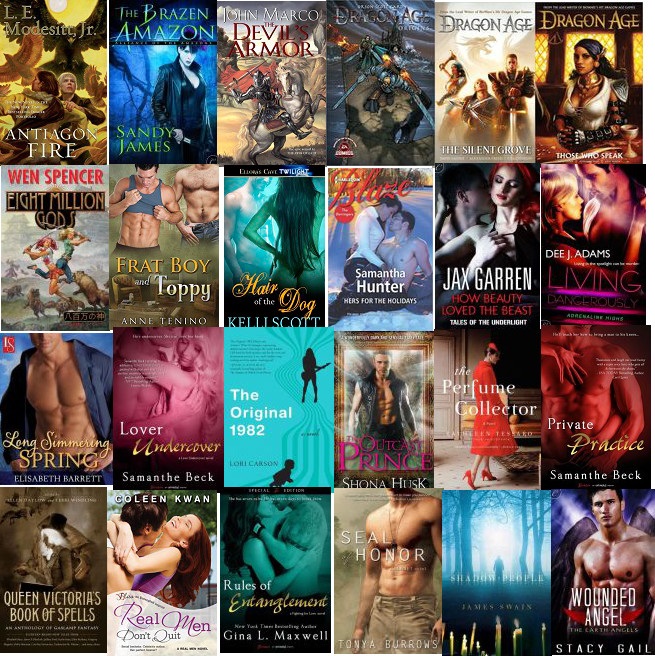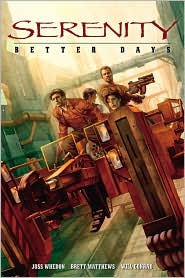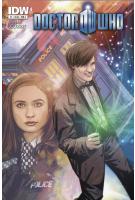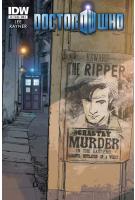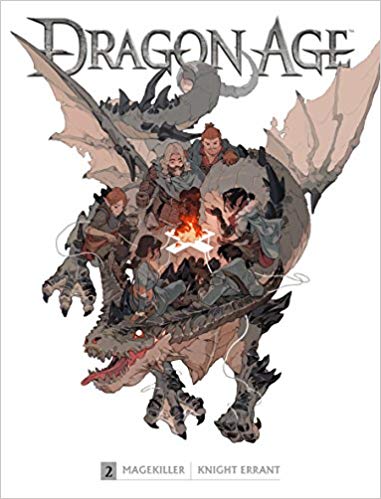 Dragon Age Library Edition Volume 2 by Greg Rucka, Nunzio DeFilippis, Christina Weir, Carmen Carnero, Fernando Heinz Furukawa
Dragon Age Library Edition Volume 2 by Greg Rucka, Nunzio DeFilippis, Christina Weir, Carmen Carnero, Fernando Heinz Furukawa Format: eARC, hardcover
Source: purchased from Amazon, supplied by publisher via Edelweiss
Formats available: hardcover
Genres: fantasy, graphic novel
Pages: 232
Published by Dark Horse Books on December 4, 2018
Purchasing Info: Author's Website, Publisher's Website, Amazon, Barnes & Noble, Bookshop.org
Goodreads
Journey to the world of Thedas in these canonical comics from BioWare and Dark Horse!
Tessa and Marius are mercenary partners who eliminate those using magic to hurt others. When they betray a powerful patron intending to kill them, they're forced to flee and join the Inquisition. Later, they're taken captive during a mission and it's up to an unwitting agent to rescue them: elven squire Vaea, who's just arrived in Kirkwall for a lavish party thrown by Varric Tethras. A talented thief, Vaea takes on an easy side job . . . but when she chooses to change the terms of the deal mid-heist, she is entangled in this dangerous recovery mission that is surely above her pay grade.
Featuring work by Greg Rucka, Nunzio DeFilippis, Christina Weir, Carmen Carnero, and Fernando Heinz Furukawa, this oversized hardcover edition collects Dragon Age: Magekiller #1-#5 and Dragon Age: Knight Errant #1-#5 and features creator commentary and behind-the-scenes material!
My Review:
 I just started a new play-through of the whole Dragon Age saga, which made this a perfect time to review this. The title is a rather unhelpful mouthful of not very informative. What this big little volume is is a hardcover compilation of two Dragon Age graphic stories, Magekiller and Knight Errant.
I just started a new play-through of the whole Dragon Age saga, which made this a perfect time to review this. The title is a rather unhelpful mouthful of not very informative. What this big little volume is is a hardcover compilation of two Dragon Age graphic stories, Magekiller and Knight Errant.
I knew I was going to get to this eventually – I even picked up an eARC from Edelweiss. But in the end, I bowed to the inevitable and purchased the hardcover. While graphic novels CAN be read on my iPad, that doesn’t mean they SHOULD be read on my iPad – unless I’m really desperate and away from home. The hardcover is large and awkward – but fun reading at the table.
The interesting thing about the two stories in this book is that they both take place in the interstices of the plot of Dragon Age Inquisition. This means three things:
- These stories only make sense if you are already a fan of the video game series
- They feel/read like short stories that just so happen to be illustrated. I’m not saying that the graphics aren’t terrific – because they are – but both of these stories would work equally well as short stories without the lovely, additional graphics.
- The stories are canonical – nothing in them conflicts with the game story canon. A fan can imagine them taking place around the edges of the game(s) actually played. These events happened while your Inquisitor was somewhere else being, as Varric Tethras might say, “all Inquisitorial”.
The first story begins a bit before the game starts, with a pair of mercenary magekillers (hence the title) who have been coerced into killing known cult members before the cult manages to murder the Divine and kick off the whole thing. They find themselves working for the Inquisition, alongside many of the other side characters in the story.
What’s fun about Magekiller is that the male/female mercenary partners are work partners without being romantic partners – nor is there a will they/won’t they vibe to the story. It was pretty neat that the romantic pairing in the story turns out to be between the female mercenary and one of the Inquisition’s better known spies. Who is also female.
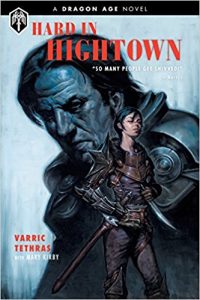 That the hero of Magekiller has a very similar vibe to one of my (and many people’s) favorite characters in Dragon Age II is icing on a surprisingly tasty cake.
That the hero of Magekiller has a very similar vibe to one of my (and many people’s) favorite characters in Dragon Age II is icing on a surprisingly tasty cake.
Knight Errant also feels like it has some callbacks to Dragon Age II, as well as to the game that started it all, Dragon Age Origins – which I’m playing again now.
But the story is all about the power of stories. There’s a quote from Varric Tethras, the author of Hard in Hightown and the premiere storyteller in the series: “There’s power in stories, though. That’s all history is: the best tales. The ones that last. Might as well be mine.”
Varric writes fiction, but he also fictionalizes the heroic deeds of his friends – including himself as a secondary character. It’s a practice that causes him no end of trouble, and makes him an interesting but extremely unreliable narrator.
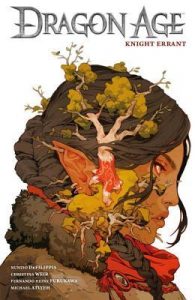 In Knight Errant, Varric is a secondary character in someone else’s unreliable narration – and he’s more than willing to play along. But under this seemingly simple tale about a has-been knight who travels the world on the strength of the stories he tells about himself, there’s a lot to unpack about why we tell the stories we tell, and how much of ourselves we invest in those stories.
In Knight Errant, Varric is a secondary character in someone else’s unreliable narration – and he’s more than willing to play along. But under this seemingly simple tale about a has-been knight who travels the world on the strength of the stories he tells about himself, there’s a lot to unpack about why we tell the stories we tell, and how much of ourselves we invest in those stories.
And if you don’t finish this story hearing the original cast of Hamilton singing “Who lives, who dies, who tells your story” you weren’t paying attention.
Escape Rating B: If you’re a fan, this collection is a lot of fun. Possibly even more fun than Hard in Hightown. There are a ton of in jokes scattered throughout both stories, and we get a chance to see a different bit of this world and different facets of characters we have come to know and love.
There are also some informative annotations from the creators on the process of both the story and the graphics.
While I can’t think that anyone else would be interested, for those of us who are working through our hundredth play-through of the series and trying to keep from chewing our nails waiting for Dragon Age 4 (which probably won’t be out until 2021 at the earliest!) it’s a fun way to pass some time in Thedas.

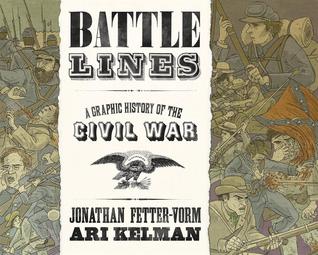 Format read: hardcover provided by the publisher
Format read: hardcover provided by the publisher






























